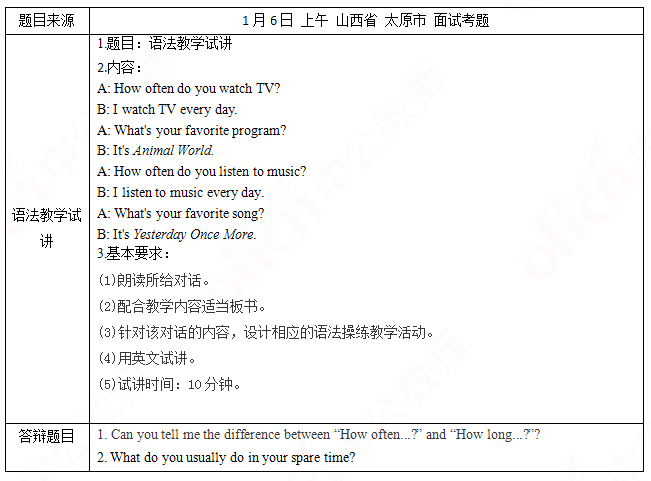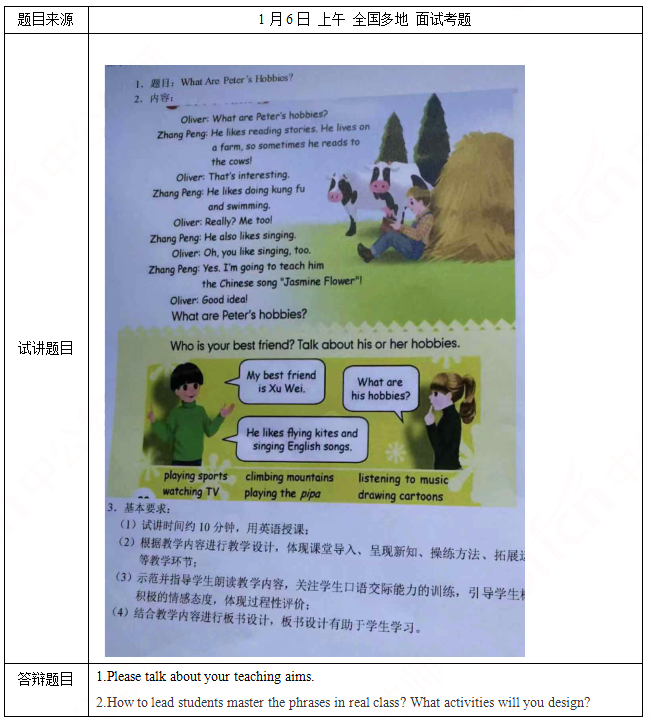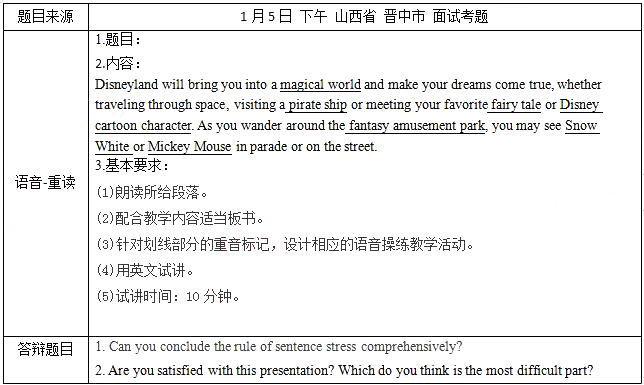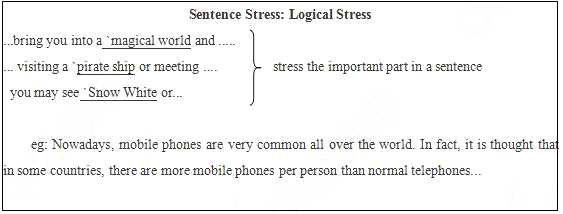网友您好, 请在下方输入框内输入要搜索的题目:
A、Do you know about business tax?
B、What do you think about business tax?
C、Can you give me a brief introduction about business tax?
()?
Yes, I will try my best.
A、 Do you know about business tax
B、 Can you give me a brief introduction about business tax
C、What do you think about business tax
How can I get legal advice for free?()
A. You can get nothing for free.
B. To be frank, I don't know for sure.
C. You can go to a law firm and ask about that.
()after introduction, you can ask about their journey.
A. To break the ice
B. Broken the ice
C. Breaking the ice
Receiving Visitors at the Airport
Do you, sometimes, need to go to meet some visitors at the airport? What should you do when you meet them? What should you talk about? On their arrival, you should pay attention to the following points:
Going up to meet the visitors
Asking about their journey
Helping with their luggage
When going to the visitors and making introduction at the airport, you should remember that the person of less importance, regardless of gender, is introduced to the person of greater importance and the visitor is always more important than anyone in your organization. The introduction is usually followed by a brief and firm handshake.
To break the ice, after introduction, you can ask about their journey, like: “Did you enjoy your journey?” , “How was your trip?” etc. If you want to be more friendly and helpful, you may offer to take the luggage.
When you get to the hotel, accompany your visitors to the hotel front desk and help them with the check-in. After check-in, ask a bell boy to help carry the luggage.
When your visitors have settled down, discuss the schedule with them to see if there might be any changes. If there are changes, don't forget to let the related persons know.
1.When making introductions, the introduction is usually starting with a brief and firm handshake.
2.In order to break the ice, you may ask visitors about their journey after the introduction.
3.If you want to be more friendly and helpful, you'd better help carry the luggage.
4.You should discuss the schedule with the visitors before they've settled down.
5.It is not friendly to ask about the visitor's journey.
参考答案:1.T 2.T 3.T 4.F 5.F
管理英语1网核形考任务单元自测4答案题目: A ,after introduction, you can ask about their journeyA、To break the iceB、Broken the iceC、Breaking the ice题目:- C - It takes about 3 hours A、When will your train arrive?B、How often do you take a train?C、How long will the journey take ?题目:- B - Its lovely. I have never been to such beautiful place like thatA、Would you like to go to the concert with me?B、How about your trip?C、Hows the weather like today?题目:- A -Please accept my sincere regrets for not being able to join you.A、Im just wondering if you could come to join us.B、Whats your plan tomorrow?C、Do you have an appointment?题目:- Do you have any plans for tomorrow morning? C A、Well, Ill be most delighted to come over.B、Im sorry, but I have another appointment tomorrow.Thanks anywayC、No. I have nothing planned tomorrow.题目:- Id like to invite you for dinner on Saturday. A A、Thank you for your kind invitation. Ill be there on time.B、I am going to take a vacation this holiday.C、Fine. Everything went smoothly. Thanks.题目:A good tour guide tells visitors _A_A、What they couldnt miss during the tripB、What during the trip they couldnt missC、What couldnt miss they during the trip题目:If there are changes, dont forget A the related persons know.A、to letB、lettingC、let题目:On their arrival, you should A the following points.A、pay attention toB、pay toC、attention to题目:Scientists have made great contributions C development of our human beings.A、WithB、OnC、to题目:She feel very tired and was glad to C him.A、put onB、depend onC、lean on题目:The environmentalists and wild goats B on the vast grasslands was a good indication of the better environment:A、escapeB、attendanceC、absence题目:The Two parties made it clear that they would not C the invitation unless the Centre reduced its tax component.A、AcceptingB、AcceptedC、accept题目:We have to C at the hotel before 6 pm.A、check onB、check offC、check in二,听力理解:请听下面的对话,根据对话内容进行判断,正确写“T”错误写“F”。listen to the dialon and choose the best answer for each auestion.u4-task4.mp31.The visitor is from the Menglin Publishing House. T2. The visitor has an appointment with Helen. F3.Melinda offers the visitor a cup of tea. F4. They are going to hold a directors meeting. T5. They hope they could have a good cooperation. T二,阅读理解:阅读下面的短文,根据文章内容从A,B,C三个选项中选出一个最佳选项。A letter of invitation is written to invite people for a business event or personal occasion. The letter should be short and clear. A soft and polite tone should be used. An invitation letter should have the date,time and the event. Always send the letter of invitation in advance. You need to let people know about at least a week before the event so that they can plan to come to the event.Lets take a look at some steps that will help you outline a letter of invitation:Begin the letter with name and address of sender and receiver Note the date.Start the main body of the letter with salutations, a word like “Dear”followed by the receivers name.Give the event in the first paragraph.Put relevant facts like date, time and place of the event in the beginning.Make that the receivers know the way to the placeLet the receivers know that they have to notice the inviters whether they will join the event or not before a certain date. The letter will note with the details of a contact person to confirm their attendance for the event.1. Whats the purpose of writing a letter of invitation? C A. To invite people for a business event.B. To invite people for a personal occasion.C. Either A or B.2. Which is not necessary when writing a letter of invitation? BA.dateB.weatherC.place3.The letter of invitation should not be BA. shortB.easyC. clear4. Why should we send the letter of invitation in advance? BA. Because the invitation is important.B. Because the receiver will need to plan to come to the event.C. Because the receiver will forget to come to the event.5.Which might be the title of the whole passage? AA. How to write a letter of invitationB. The importance of writing a invitation letterC The purpose of writing a invitation letter二阅读理解:阅读下面的短文,根据文章内容进行判断,正确写“T”错误写“F”。RECEIVING VISITORS AT THE AIRPORTDo you, sometimes, need to go to meet some visitors at the airport? What should you do when you meet them? What should you talk about? On their arrival, you should pay attention to the following points:答案:1:T; 2:T; 3:T; 4:F; 5:F
一、考题回顾

二、考题解析
【教案】
Teaching aims:
Knowledge aim:
Students can master the words: doctor, zoo, and hospital
Ability aim:
Students can improve their skills of listening and speaking.
Emotional aim:
Students can be more interested in taking part in activities and know how to deal with the emergency..
Key and difficult point:
Key Point:master the words: doctor, zoo, and hospital and understand the main topic of this dialogue.
Difficult Point: know how to deal with the emergency in daily life.
Teaching procedure:
Step 1: Warming-up
1. Greetings.
2. Ask students where they went last weekend.
3. Ask students “did you meet any emergency when you had the plan”
Step 2: Pre- listening
1. Draw some pictures to teach about the words: doctor, zoo, and hospital
2. Let students guess what the main topic of passage according to the title
Step 3: While-listening
First listening: check the prediction of main topic of the dialogue and ask”what are they talking about”
Second listening: what’s the matter of Sarah? and what is about his feeling?
Third listening: read after the tape.
Step4: Post-listening
Set a situation: if you meet this situation, what should you do? and if your friend meet this situation and he calls you for help. What will you say?
Step5: Summary and Homework
Summary: ask a student to conclude the content of the lesson and summarize with the whole class.
Homework: ask students to practice the sentence structure learned today with desk mates after class.
Blackboard design:

1.What is the lecture mainly about?
2. How to guide the hearing to say
In this lecture, Sarah meet the situation that his father is ill so they can not go to the zoo and need to go the hospital, so he feels sad and angry . By this lesson, I hope my students can think more about our parents and do not be selfish. I hope my students can think more and think about others in our daily life.
2.
In listening and speaking lesson, the speaking and listening are all important. Students need to learn how to speak. Before speaking, I will lay the groundwork. I will teach the words and sentences to clear the obstacles, so the students can be confident in speaking. Listen more to be familiar to the topic is also the good way to make students want to speak.
一、考题回顾

二、考题解析
【教案】
Teaching aims:
Knowledge aim:
Students will know the usage of the frequency adverbs and the sentence structure “How often...?”.
Ability aim:
Students can use the sentence structure freely in their daily life.
Emotional aim:
Students will be more confident in learning English and not afraid of speaking English.
Key and difficult point:
Key Point: Students will know how to use the sentence structure in their daily life.
Difficult Point: Students can cultivate their confidence in learning English.
Teaching procedure:
Step 1: Warming-up
1. Greetings.
2. Ask students what they usually do in their spare time and why, and ask some of them to share with the whole class.
Step 2: Presentation
1. Listen to the tape for the first time and find out what the speaker does every day, and then invite students share their answers.
2. Ask students the following questions: how often does the speaker watch TV? How often does the speaker listen to music? And then write down the sentence on the blackboard.
3. Explain the sentence structure to students: the sentence structure is used to ask questions about how many times something has been done or how many times a state exists in a given period of time.
4. The teacher read the dialogue and ask students to read after it to get a deep understanding.
Step 3: Practice
1. Role-play. Ask students work in pairs and role play the dialogue. Then invite two groups to show in front of the class.
2. Play a game: word cards. Invite two couples of students. Ask one student to choose the card in the box and then ask the other students the question “ how often do you...?” using the activities showed in the card, and then change their role.
Step4: Production
Let students work in groups of 4 and discuss on the topic: how often do you...? according to their own hobbies. After that invite two groups to present in the whole class.
Step5: Summary and Homework
Summary: ask a student to conclude the content of the lesson and summarize with the whole class.
Homework: ask students to ask their friends “ how often do you...?” after class and write down on the exercise book.
Blackboard design:

1. Can you tell me the difference between “How often...?” and “How long...?”?
2. What do you usually do in your spare time?
The first sentence structure is used to ask questions about how many times something has been done or how many times a state exists in a given period of time. The second sentence structure includes two different usage: one is used to ask how long does it take. It's mainly used to ask questions for a period of time; the other is used to ask for the length of something.
2.
I really have a great passion for sports, i like to do yoga, cycling and jogging. Take jogging for example. It stimulates me to learn more about body -building. Secondly, I am able to meet new friends through my hobby. Lastly, the hobby will teach me some self-discipline, because to do it regularly is so challenging.
一、考题回顾

二、考题解析
【教案】
Teaching aims:
Knowledge aim:
Students will master some phrases about hobbies and the sentence structure about how to talk about hobbies
Ability aim:
Students will improve their speaking ability in talking about hobbies.
Emotional aim:
Students will be more confident in speaking English.
Students will arouse their interest in learning oral English.
Key and difficult point:
Key Point: How to talk about hobbies.
Difficult Point:
Students will be more confident in speaking English.
Students will arouse their interest in learning oral English.
Teaching procedure:
Step 1: Warming-up
1. Greeting.
2. Chant: Dog, dog, what can you do?
I can run after you.
Panda, panda, what can you do?
I can eat so much bamboo.
Mouse, mouse, what can you do?
I can hide in the shoe.
Mike, Mike, what can you do?
I can draw animals in the zoo!
Step 2: Presentation
1. Read the dialogue by the teacher, and ask what the dialogue is about. (It’s about Peter’s hobbies)
2. Let the students find what Peter’s hobbies are. And tell them we can use what’s ..’s hobbies? to ask others’ hobby.
He likes reading stories, doing Kung fu and swimming and he also like singing.
Meanwhile I will use pictures and actions to help them understand these phrases and add -s after like when we meet he/she/it and v-ing follows the verb like.
Step 3: Practice
1.Listen to the tape and try to follow it. Then give them 5 minutes to role play the conversation in pairs.
2.Invite volunteer to answer my question: who is your best friend? What are his/her hobbies.
Step 4: Production
Work in group of four to do a survey ask group members two questions: who is your best friend? What are his/her hobbies. Fill in the chart and then do a report in 7mins.
Step5: Summary and Homework
Summary: make a brief summary of what we have learned today.
Homework: Ask their parents what their hobbies are and draw their hobbies down.
Blackboard design:

1.Please talk about your teaching aims.
2.How to lead students master the phrases in real class? What activities will you design?
Knowledge aim:
Students will master some phrases about hobbies and the sentence structure about how to talk about hobbies
Ability aim:
Students will improve their speaking ability in talking about hobbies.
Emotional aim:
Students will be more confident in speaking English.
Students will arouse their interest in learning oral English.
2.
Due to the limited time I design few activities. In real class. I will give students more example to understand the function of the sentence structure. At the same time, more practice will be used such as the mechanical drilling: filling in the blanks with the correct form of verbs and make up sentences with given words. And meaningful drilling describe the pictures and so on.
一、考题回顾

二、考题解析
【教案】
Teaching aims:
Knowledge aim:
Students will know the rule of logical stress in a complete sentence.
Ability aim:
Students will use the logical stress correctly and know how to make use of the sentence stress in different sentences correctly.
Emotional aim:
Students will be more confident in speaking English.
Key and difficult point:
Key Point: Students will master the rule of logical stress in sentences in English.
Difficult Point: Students can use the logical stress in sentences in daily life.
Teaching procedure:
Step 1: Warming-up
1. Greetings.
2. Listen to an English song and feel about the tune of the melody. Let students to know that not only songs but also the language has its stress in order to express different emotions.
Step 2: Presentation
1. Work in pairs to read the passage by themselves and ask them to pay more attention to the sentence stress. After practice, ask one pair to perform it and others should tell their opinion whether they agree or not.
2. Listen to the tape of the passage and find out whether the students themselves make any mistakes. Then let students find out the rule of the sentence stress (logical stress ) with the help of the teacher: in a sentence we can stress the important part according to the meaning of the passage. After the students find the rule, the teacher read the passage and let them repeat after it.
Step 3: Practice
1. Ask students to read the passage by themselves again and they should use the correct logical stress while reading.
2. Give students more sentences and ask them read the sentences by themselves using the logical stress.
Step4: Production
Let students work in groups of 4 and make a dialogue about the theme parks, such as the theme, the feature, the activities and so on, and they should use the rule of logical stress learned in the class. After that invite two groups to share their outcomes with the whole class.
Step5: Summary and Homework
Summary: ask a student to conclude the content of the lesson and summarize with the whole class.
Homework: ask students to read the work of Shakespeare’s and use the logical stress learned today after class.
Blackboard design:

1. Can you conclude the rule of sentence stress comprehensively?
2. Are you satisfied with this presentation? Which do you think is the most difficult part?
As far as I’m concerned, there are two sentence stress rules: logical stress and grammatical stress. Logical stress is what i have presented in the presentation. The grammatical stress refers to that we need to stress notional word, which usually contains noun, verb, adjective adverb and so on. At the same time, the functional word needn’t to be stressed, which usually includes conjunction, article and preposition.
2.
The difficulty in my eyes is: first of all, without the participation of students, because of the teaching reasons, I can not interact effectively with students based on their feedback. In this case, it is difficult for me to organize classroom teaching activities and achieve the desired results. Second, what I need to improve is to introduce the key points to the students in a way that is easy to accept and adapt to the environment without an atmosphere of spoken English, because my spoken English is not very fluent, and I am very concerned about this interview. So I felt a little nervous. However, all these factors did not affect my overall performance. In view of the above problems, I will constantly reflect, and learn from experience in practice to improve my teaching ability. In short, I am basically satisfied with the presentation.
一、考题回顾

二、考题解析
【教案】
Teaching aims:
Knowledge aim:
Students will master the expression of asking jobs-What does she do? She is a doctor.
Student will understand words about different jobs: doctor actor policeman and so on.
Ability aim:
Students will improve their abilities of speaking and listening.
Emotional aim:
Students will be more confident in speaking English. And show their respect to different jobs.
Key and difficult point:
Key Point: Students will master how to ask jobs in English.
Difficult Point: Students will use the sentence structure in daily life.
Teaching procedure:
Step 1: Warming-up
1. Greetings.
2. Sing a song and ask student what the song mainly about. “be what you wanna to be”
Doctor actor lawyer or a singer
Why not president be a dreamer
You can be just the one you wanna be
Police man fire fighter or a post man
Why not something like your old man
You can be just the one you wanna be
Doctor actor lawyer or a singer
Why not president be a dreamer
You can be just the one you wanna be
Step 2: Presentation
1. Show pictures of different jobs and explain the working environment, working place, working content. the spelling and pronunciation of the words.
2. Introduce the new sentence and write is on the blackboard
“What do you do?”
“I’m a student”
“What does she do?”
“She is a doctor.”
Step 3: Practice
1. Ask and answer between teacher and student.
“What do you do?”
“I’m a student”
2. Show a video clip from “ZOOTOPIA” and ask students what does Judy Hopps do? What does Gazelle do?
3. Listen to the tape and finish the exercise on the text book.
Step4: Production
1. Role-play: ask students to make a dialogue according to the picture in the textbook.
2. Survey: ask students to make a survey about their parents’ jobs.
Step5: Summary and Homework
Summary: ask a student to conclude the content of the lesson and summarize with the whole class.
Homework: ask students to practice the sentence structure learned today with desk mates after class.
Blackboard design:

1.What are the teaching aims of your class?
2.Talk about your blackboard design.
There are there aspects of the teaching aims; they are knowledge aim, ability aim, and emotional aim. Knowledge aim: Students will master the expression of asking jobs-What does she do? She is a doctor. And Student will understand words about different jobs: doctor actor policeman and so on. Ability aim: Students will improve their abilities of speaking and listening. Emotional aim: Students will be more confident in speaking English. And show their respect to different jobs.
2.
There are three parts of the blackboard design. The title, new words and new sentence pattern. It’s clean and logic, easy for students to take some notes.
更多 “管理英语1网核形考任务单元自测4答案” 相关考题
- 关于成就需要的说法,错误的是( )。 A.成就需要是指个体追求优越感的驱动力 B.成就需要高的人倾向选择适度的风险 C.成就需要高的人具有较强的责任心和进取意识 D.一般来说,成就需要高的人工作绩效较低
- 商业银行采用实际成本原则进行计量,有哪些优点?
- 中长期贷款展期不得超过原贷款期限的一半,最长不得超过5年.
- 下面观点哪个更符合社会学习理论的人格观( )。A.人格是受个人本能驱动的B.人格是人与环境相互作用的结果C.人格是外显与内隐反应的总和,这些反应是个人被强化后的结果D.人格是外在环境塑造的产物
- 对于人格测试的结果,我们应该( )。A.无所谓B.坚信不移,并作为行事的标准C.结合不同的理论,辩证地看待D.置之不理,完全不信
- ( 难度:中等)Hive与传统关系型数据库对比,优势有A.计算能力更强B.延迟更低C.扩展性更好D.索引各类更多
- 国防是一个庞大的系统工程,国防强固必须优化各相关要素,包括( )、( )、( )、( )、( )、( )、( )、( )。A.政治清明,经济实力雄厚B.武装力量强大C.全民爱国,关心国防D.实行进攻性的军事战略E.国防科技工业先进配套F.国防工程设施完善G.建立广泛的国际联盟H.国防动员体制机制先进有效
- 单位活期存款的计息时间一般为每月末30日,结算出来的利息于次日入账。
- 问答题1945年,在回答黄炎培先生如何使国家政权跳出:“其兴也勃焉,其亡也忽焉”历史周期率的提问时,毛泽东明确指出:“只有让人民来监督政府,政府才不敢松懈;只有人人起来负责,才不会人亡政息。”请结合我国民主政治的发展历程,谈谈对人民当家作主是社会主义民主政治的本质和核心的理解。
- 根据奥尔德佛的ERG理论,人的核心需要包括( ). A.成就需求 B。生存需要 C。关系需要 D.权力需要 E.成长需要